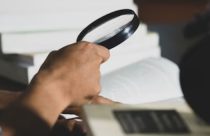Image Manipulation in Research ArticlesImage Manipulation Detection Services

Advanced technologies have put the control of scientific images in the hands of researchers and authors. For example, the blots and gels that accompany and represent data in an article, may be manipulated in a variety of ways. However, there are two basic categories of image manipulation or image editing in scientific research articles:
1) Clarification
2) Deception
In clarification, an author may, quite ethically, attempt to “clean up” an image in order for it to be more readable. Image editing software programs, such as Adobe Photoshop, allow for the digital manipulation of an image to highlight the areas of interest and diminish the areas that distract from the relevant information. However, if the author fails to note that the image has been altered, this could lead to trouble—the author could be accused of misconduct and the journal could be accused of publishing inaccurate or misleading material.
Deception, on the other hand, is quite straightforward. If the data does not match the author’s conclusion, the author may edit the accompanying image or images to match the claims. With the pressure to publish being intense at many universities, it would be quite tempting to tweak an image to go along with findings that, perhaps, aren’t completely valid. In this case, there is a lot more than reputation at stake in the scientific world if the deception is not caught.
Since 2002, many journals and publishers have begun allowing authors to submit their work electronically. Coupled with this advancement and wide distribution/usage of image editing software, the stage was set for an increase in the manipulation of scientific images.
Elisabeth Bik, Arturo Casadevall, and Ferric Fang co-authored a paper titled, “The Prevalence of Inappropriate Image Duplication in Biomedical Research Publications”, that studied the prevalence of image manipulation in scientific research publications. They screened 20,621 scientific papers from 40 journals dating from 1995-2014 and found that 782 of those papers (3.8%) contained at least one figure with a manipulated image. They also found that incidences increased after 2003.
Who is Responsible?
Responsibility for ethical and accurate data representation in scientific images lies mainly with the author. However, peer-reviewers must be vigilant, and journal editors must be the final gateway—setting clear guidelines for authors, spending the time and money to thoroughly review and investigate article submissions, and following through with consequences for clear cases of image manipulation.
Here is an example of clear manipulation of data from the Journal of Cell Biology:

Although moving into the electronic age may have made some areas of publication easier for academic journals, however, this is one area where there will be no substitute for the investment of time for inquiry and funding for the appropriate investigative tools. It all hinges upon the establishment of clear guidelines for authors so that there is no question about what is acceptable and unacceptable manipulation of scientific images.
Guidelines and Investigative Tools
Along with the guidelines for authors, reviewers, and publishers, even investigative tools that keep pace with digital image editing software are needed. These guidelines regarding image manipulation should be a standard part of article submission guidelines for authors. In addition, there should be guidelines for peer reviewers and journal editors so that they know what to look for when they are examining data in the form of an image.
The Council of Science Editors (CSE) has published some guidelines set forth by the Rockefeller University Press, which outlines acceptable and unacceptable image manipulation. The CSE has also developed a procedure for “Handling Guideline Violations,” intended to provide direction to reviewers and journal editors. The CSE emphasizes that guidelines will serve no purpose if editors are not willing to follow through with repercussions for misconduct.
Investigative tools will also need to be made available as widely as image editing software. John Dahlberg, PhD, Deputy Director of the Office of Research Integrity (a division of the US Government’s Department of Health and Human Services), gives examples of some forensic image tools in an article by Anthony Newman, published by Elsevier:
- Forensic Droplets – A small desktop application in Adobe Photoshop that can be used to compare two black and white scientific images, and can detect image editing
- Adobe Bridge – Digital asset manager that allows the user to efficiently locate, organize, browse, preview, and batch process content files
- ImageJ – Public domain Java image processing program, which allows multiple images to be displayed on the screen at one time
Solutions for Image Manipulation
In 2006, Mike Rossner wrote about a case of image fraud for The Scientist. In reading the article, one can sense his annoyance regarding a case of image fraud perpetrated by Woo-Suk Hwang. He makes a clear case for setting and enforcing guidelines and the usage of image fraud-detecting technology for all scientific research submissions.
Mike has now gone on to establish his own company, dedicated to the issue of image manipulation—Image Data Integrity (IDI). The company provides “consultation for concerns related to biomedical image data manipulation for institutions, journal, funding agencies, and legal counselors.” The fact that someone in the field of scientific research has gone on to establish an entire company around this issue indicates that image manipulation is a problem that is not likely to go away soon. Constant vigilance is required.
Journal editors need to make guidelines clear to authors about acceptable and unacceptable image editing. They should make it clear that there will be consequences for knowingly and purposefully manipulating images in an unethical fashion.










Thanks for sharing this kind of articles.